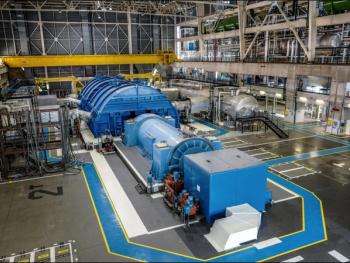
Making smart digital investments
As energy companies embrace the growing role that software and big data analytics play in their power plant operations, the challenge that plant owners and managers face is to make sure they are investing in the correct digital technologies to provide greater situational awareness of plant condition sat the individual site and fleet-wide levels to boost efficiency and revenue.
Chicago-based Exelon Corp., revealed its own approach in December 2016 when it announced it selected GE’s Power Digital Solutions to supply its cloud-based PredixTM industrial software controls platform that the power provider will use to manage its fleet of nuclear, wind, hydroelectric and fossil fuel-powered plants. Over a five-year period, the company plans to deploy Predix software and supporting applications across its fleet of 91 power plants that generate 32,700 megawatts (MW) for more than 10 million customers.
The announcement followed a 2015 digital pilot project in which Exelon and PSEG served as pilot partners in the launch of GE’s Digital Power Plant platform that creates “digital twins” of a plant’s components to give operators real-time system oversight capabilities. The new fleet wide digital pact was announced just two months after the New York Power Authority (NYPA)announced it also planned to deploy Predix to help manage 16 power plants generating about 5,600 MW.
With software–based technologies taking on a greater role in power plant operations at the fleet and plant levels, the Chicago-based power company (like other energy producers) has had to evaluate a growing array of new digital technologies -- green lighting some and taking a pass on others based. Each energy company follows its own technology review process and investment philosophy. The company decided to invest in Predix only after it put the software platform through a methodical, multi-step process that is in place to evaluate any new technology that could impact plant operations.
In this process, the company first tries to develop assumptions about a given technology and then tests those assumptions to see how it would fit within its operations. Then the company implements a number of different types of pilot projects to try to help validate the technology. The goal is to give the company the confidence required to then scale up the technology and ultimately make investments. Because there is still so much uncertainty in new digital technologies, company prefers to first make small investments to validate its assumptions. If and when the power company decides it is ready to make larger investments, it can do so with greater clarity and certainty for the future.
When the company began considering the Predix platform, it used its evaluation process to compare it with other competing software control systems to determine which product would be the right fit for its power plant fleet.
When considering whether or not to make a digital investment—including for the fleet wide software control system – the Chicago-based company looks at the technology through three different lenses:
- Is the technology being evaluated state-of-the-art or “near” state-of-the-art?
- Is the technology vendor familiar to the plant operator and will it be a good partner in the digital journey?
- What are some other intangible factors that will make the process as easy as possible?
- Does the vendor offer some unique background or skill-set that would make the digital journey a little easier to take?
For its review of the various software control systems, the company took a number of factors into account. For example,it looked at its relationships with each of the vendors and how well they worked together. In many cases, because the products are not yet fully vetted, a company ideally is looking for a partner on its digital journey.
In Predix, the company was presented with a cutting-edge industrial software platform at the heart of the Digital Power Plant initiative. At the fleet wide level, Predix allows the operator to access the benefits created by the digitization of electricity offered at many points along the electricity value network.
Compared to other vendors, such as a pure technology company from Silicon Valley or other regions, GE’s familiarity with Exelon’s generation assets and industrial sectors were crucial factors that helped convince the company that Predix could be implemented within its ecosystem.
It is essential that any new digital technology has the flexibility to fit seamlessly with the company’s older legacy systems.Most technology suppliers today recognize this need for flexibility and that their products should be as “technology agnostic” as possible.In the Chicago power provider’s case, it has numerous unique systems in each of its plants.Therefore, in evaluating and selecting a digital controls supplier, the company needed a solution that could work across all of its existing assets and systems.
Case in point, the Predix-powered Asset Performance Management (APM) software utilizes sensors to give the plant operator a single, consolidated view of plant performance, predict potential problems and avoid costly unplanned outages. APM also gives the operator a unified controls platform by offering functionality with all fuel types within the utility’s portfolio. Having a unified platform from an APM perspective allows the operator to effectively maintain its power plant assets.
Meanwhile, at the individual plant level, when it comes to making specific digital component investments, operators have to make purchasing decisions on a case by case basis – looking at factors including the power plant’s age, projected return on investment within the plant’s lifetime, market prices and the presence of a power purchase agreement.
Although plant operators and managers understandably want to avoid making major digital investments in older plants nearing retirement, these older facilities actually can be ideally suited to host pilot projects to help a power provider accelerate the evaluation and validation of a digital technology in a low-risk setting.
While power providers generally worry about concerns including implementation risk and change management, the Illinois power company’s Predix fleet wide deployment poses a unique challenge by representing the most expansive implementation of digital technology, reaching across the company’s entire generation stock.
Working closely with the software technology supplier during the evaluation process and having a shared vision for digital’s role in the power provider’s operations gave the company the confidence it needed to invest in the Predix solution for its entire fleet.
Michael Kurzeja is senior manager of innovation for Exelon Generation. Dick Ayres is chief commercial officer for GE’s Power Digital Solutions.
Newsletter
Power your knowledge with the latest in turbine technology, engineering advances, and energy solutions—subscribe to Turbomachinery International today.




